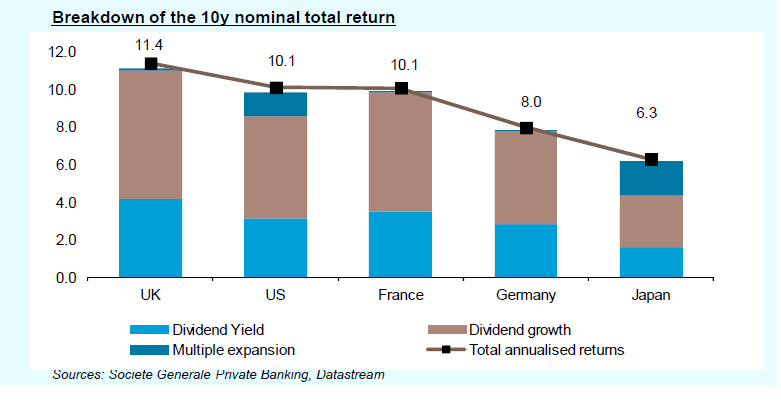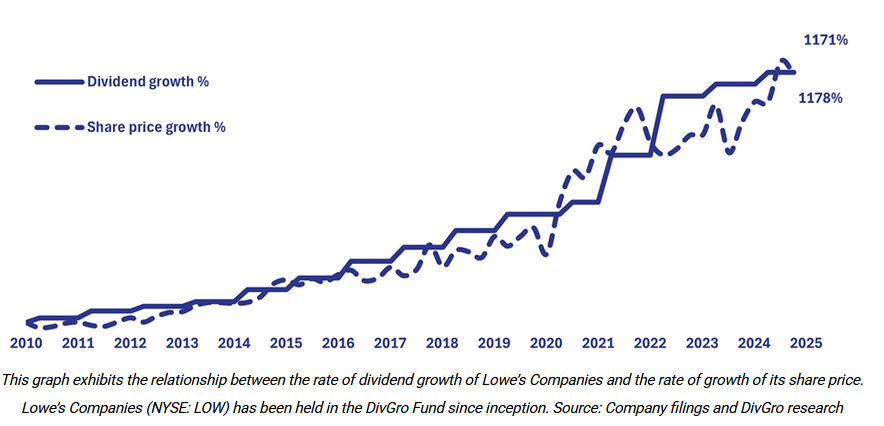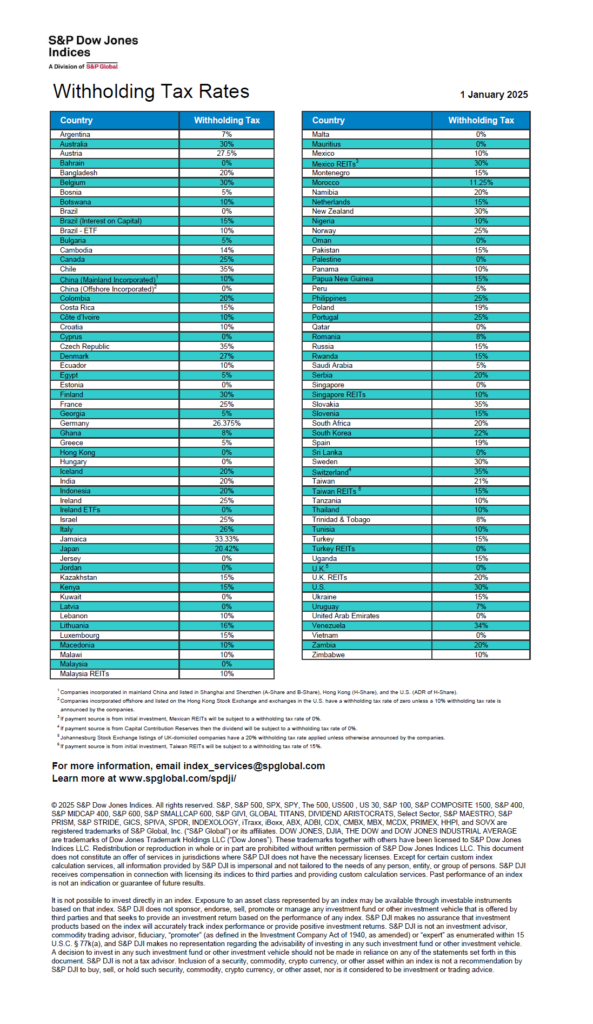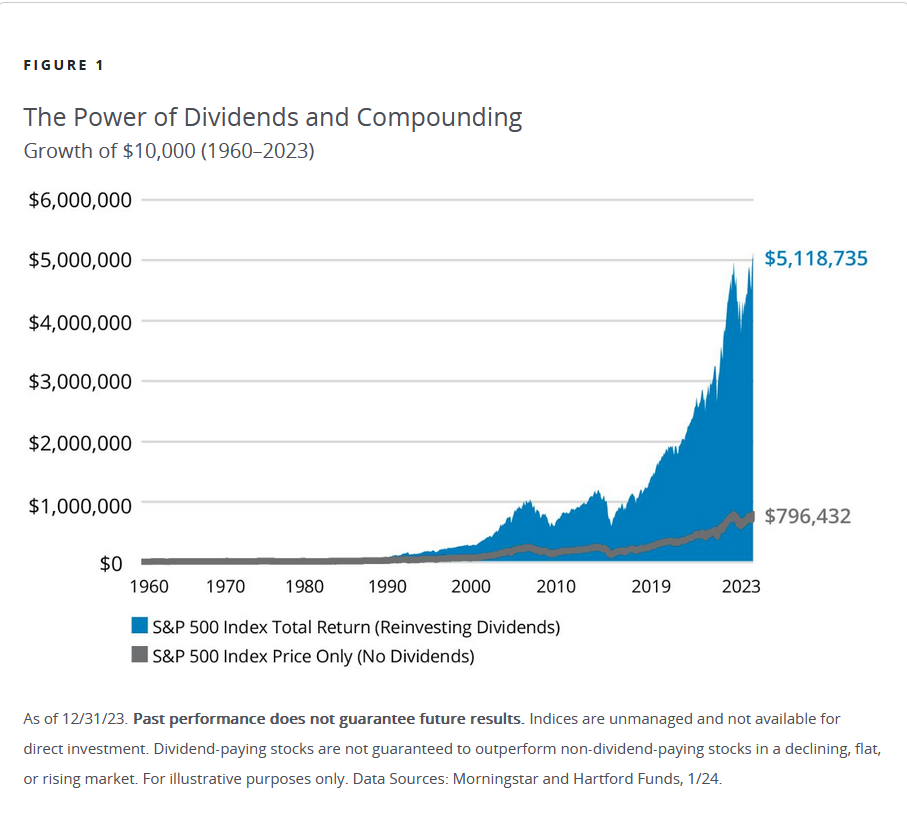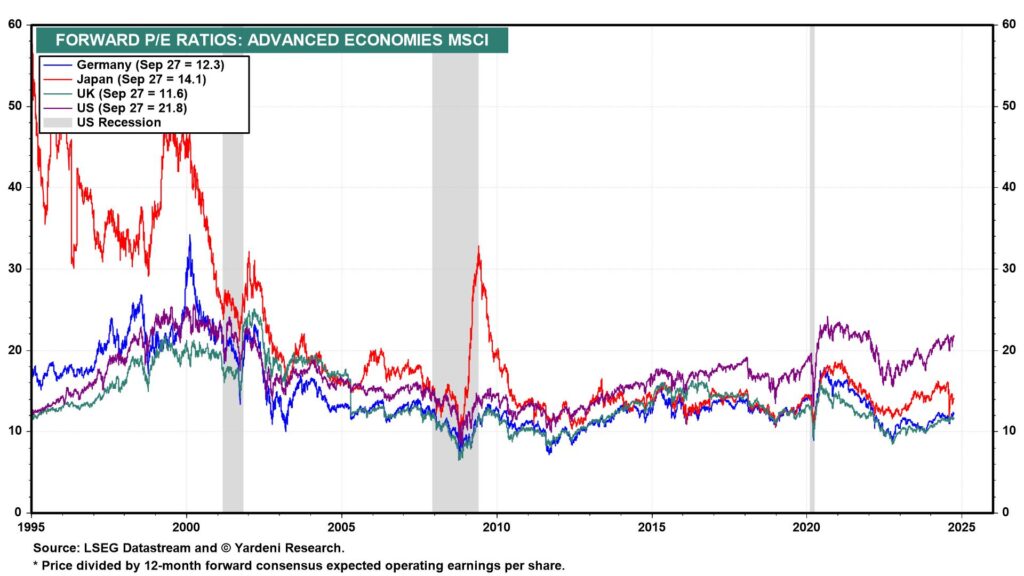Dividend stocks offer many advantages over non-dividend stocks. I have written many articles on this topic before. Recently I came across an interesting note on the dividend edge in the Strategy -Quarterly Views report of Socgen’s Private Banking Group. From the report:
There are many reasons why dividend-paying stocks should be favoured over non-dividend stocks in the coming months, and why dividends should generally be seen as offering some protection against downside. Here are three:
• Most stocks rise and fall on average at the same pace as the market. However, stocks that pay dividends offer an extra incentive to hold on to them during tough times.
• Most dividend stocks come from mature companies with stable business models which generate much more in earnings than could be reinvested into the business. Slower-growth companies will generally experience much smaller drops in share prices than those in growth sectors.
• The quarterly dividend payment provides investors with a relatively stable cushion against stock market declines, as most companies will maintain dividend payments to their shareholders. During market declines, it is very difficult to generate any capital gains. The dividend is the only item that increases investors’ total returns during severe corrections. So when markets become volatile, share dividends offer one way to reduce potential portfolio losses.
While short-term is the focus of attention of some investors today, over the medium and long terms dividends account for the most part of a stock’s total return. In fact, in the long term dividends account for more than three-quarters of total equity returns. The chart below shows that returns due to multiple expansion over a 10 year period is small compared to dividend returns:
Click to enlarge
Source: Strategy -Quarterly Views,Societe Generale, June 2014
Note: Data shown above are as of June, 2014
Unlike the US, the portion of total returns due to expansion in the P/E ratio for French, German and British equities were negligible. The key takeaway here is that investors should hold dividend-paying stocks for the long term to reap solid total returns.
Ten dividend stocks from the consumer staples sector are listed below for consideration:
1.Company: Nestle SA (NSRGY)
Current Dividend Yield: 3.32%
Sector: Food Products
Country: Switzerland
2.Company: Unilever PLC (UL)
Current Dividend Yield: 3.74%
Sector: Food Products
Country: UK
3.Company:Colgate-Palmolive Co (CL)
Current Dividend Yield: 2.10%
Sector: Household Products
Country: USA
4.Company: British American Tobacco PLC (BTI)
Current Dividend Yield: 4.54%
Sector:Tobacco
Country: UK
5.Company: Heineken NV (HEINY)
Current Dividend Yield: 1.66%
Sector:Beverages
Country: The Netherlands
6.Company: Diageo PLC (DEO)
Current Dividend Yield: 2.95%
Sector: Beverages
Country: UK
7.Company: Danone SA (DANOY)
Current Dividend Yield: 2.98%
Sector:Food Products
Country: France
8.Company: Kimberly-Clark Corp (KMB)
Current Dividend Yield: 2.98%
Sector: Household Products
Country: USA
9.Company: Anheuser-Busch InBev SA/NV (BUD)
Current Dividend Yield: 2.94%
Sector: Beverages
Country: Belgium
10.Company: Kellogg Company (K)
Current Dividend Yield: 2.99%
Sector: Food Products
Country: USA
Note: Dividend yields noted above are as of Dec 12, 2014. Data is known to be accurate from sources used.Please use your own due diligence before making any investment decisions.
Disclosure: No Positions
You may also like:
- Comparing the Contribution of Dividends and Share Price Gains to Total Returns Across Regions
- Comparing Dividend Payout Ratios Across Regions
- Comparing Emerging Market Dividend Payout Ratios To U.S. Dividend Payout Ratios
- On The Dividend Payout Ratios Of U.S. Stocks
- Ten Ways To Benefit From The Power Of Dividends
- The Relationship Between S&P 500 Dividends and Dividend Payout Ratio
- Comparison of Dividend Yields between U.S. and Foreign Stocks
